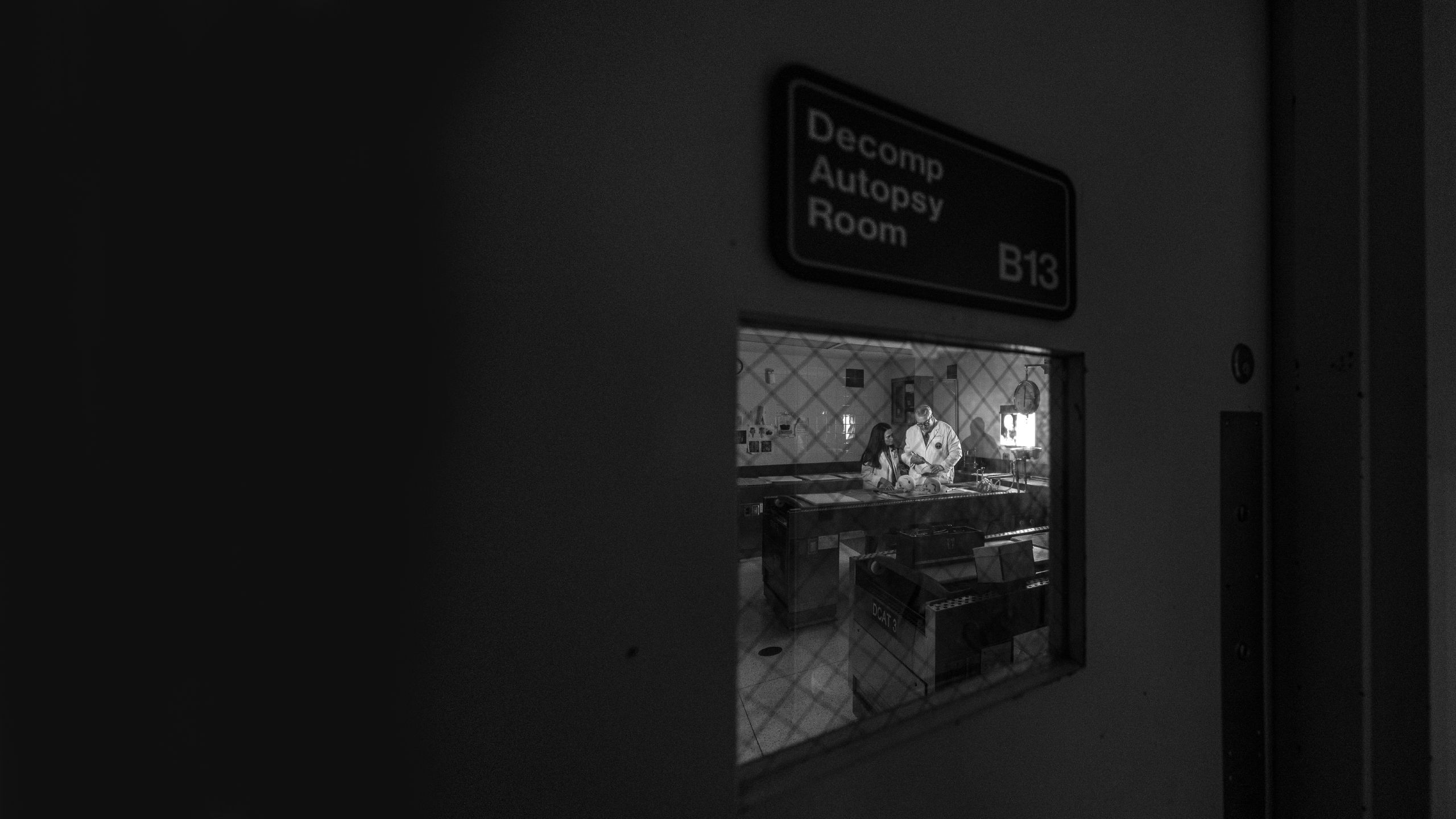EMORY MAGAZINE | SPRING 2023
THE “CSI” EFFECT
BUSTING 9 COMMON MYTHS TV SHOWS PERPETUATE ABOUT MEDICAL EXAMINERS

If you’re a fan of crime dramas like CSI, Law and Order, Criminal Minds, and Bones, among many other shows that seemed to have dominated broadcast television these past few decades, you probably have a somewhat distorted view of who exactly medical examiners are and what they do.
Emory alumni and trained forensic pathologists Jason Graham 06MR and Michele Slone 91B — the top two leaders of the New York City Office of Chief Medical Examiner — are here to set the record straight.

Myth No. 1: Medical examiners and coroners are basically interchangeable job titles.
“There is some overlap in responsibilities — especially in issuing death certificates — but medical examiners and coroners are part of completely different systems,” Graham says. The coroner system is much older, he notes, dating back to England in the Middle Ages. “Coroners are elected, rather than appointed, and their qualifications vary by jurisdiction,” Slone adds. “Not all are physicians.” Meanwhile, she says, medical examiners are all physicians with specialized death investigation training in forensic pathology.

Myth No. 2: Medical examiners mainly work on criminal cases.
“The majority of the deaths we investigate are either sudden deaths from natural causes — heart attacks, strokes, undiagnosed diseases — and accidental drug overdoses,” Graham says. “Violent deaths involving criminal acts make up a much smaller portion of our caseload.”

Myth No. 3: Medical examiners wrap up cases and court testimony quickly.
“People think we can finish our investigations and lab testing and autopsies in the span of a few hours, thanks to the condensed reality of TV shows,” Graham says. “And when I show up in court, jurors are frequently surprised at how long it takes us to go through all of our meticulous evidence and findings.”

Myth No. 4: Medical examiners are creepy loners with a fixation on death.
“Our fictional counterparts often seem so lonely and depressed and antisocial,” Slone says. “But the reality is that most medical examiners I know are very well-adjusted, outgoing, and empathetic people who love to work in collaborative environments. The fact that we all deal with death on a daily basis bonds us together and gives us a collective noble purpose.”

Myth No. 5: Medical examiners work only one case at a time.
Though most crime dramas follow one case an episode, or maybe even over the course of a season, medical examiners are typically working numerous investigations simultaneously. “It may not be suited for TV or movies, but the volume of our workload requires us to work on multiple cases at the same time,” Graham says. “Besides, we think being involved in so many cases at once is actually more interesting from a professional perspective.”

Myth No. 6: Medical examiners and their investigative teams have glamorous careers.
Dramas like CSI often show the whole team at the scene of a crime or in their headquarters dressed to kill and lit up like movie stars. “There is no sexy blue lighting in our offices, labs, and autopsy rooms,” Graham notes. “And we’re certainly not showing up at death scenes wearing high heels and designer clothes,” adds Slone.

Myth No. 7: Medical examiners often tackle an investigation by focusing on the most sensational explanation.
“Another thing that doesn’t square with reality is that in these shows, medical examiners often spout wild theories that run counter to the science at hand,” Slone says. “Everything we do is fact- and science-based. It’s fully documented and will be part of the official record, including law enforcement investigations. Our opinions and findings have to stand the test of scrutiny. We are not in the business of speculation.”

Myth No. 8: Medical examiners routinely interview witnesses and suspects in criminal cases just like homicide detectives do.
As is true in New York City, the medical examiners’ office and law enforcement are often separate entities and while they work closely together, their roles don’t usually overlap. “Sometimes we have questions for witnesses and suspects that need to be answered,” Graham says. “But we go back to law enforcement for key answers centered on criminal investigations. We do conduct interviews with family members and health care providers in the course of completing our independent medical investigations.”

Myth No. 9: Medical examiners only work on the prosecutor’s side of a case.
“Shows often depict us working for the police and for the prosecution,” Slone says. “However, we interact with defense attorneys in much the same way. While our evidence may help convict the guilty, it also serves to exonerate the innocent. We are only on the side of the truth.”

Want to know more?
Please visit Emory Magazine, Emory News Center, and Emory University.

